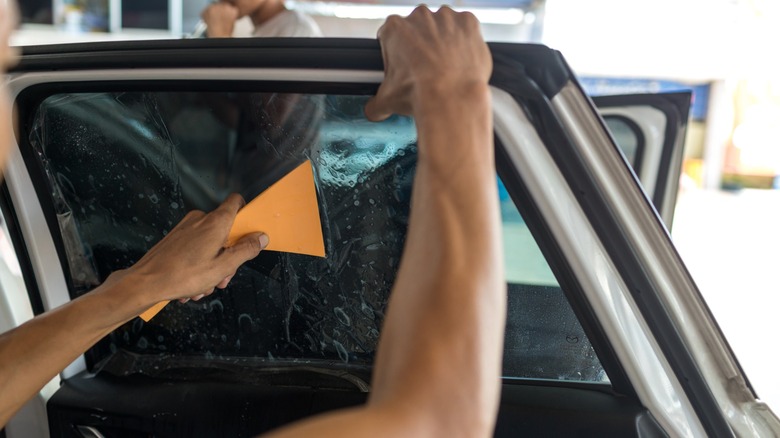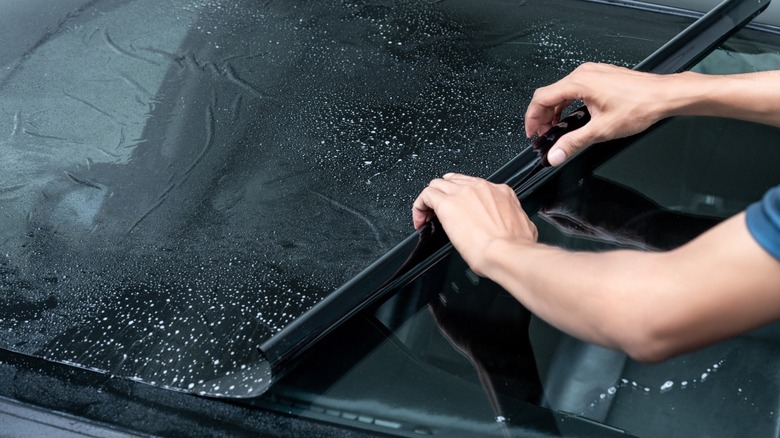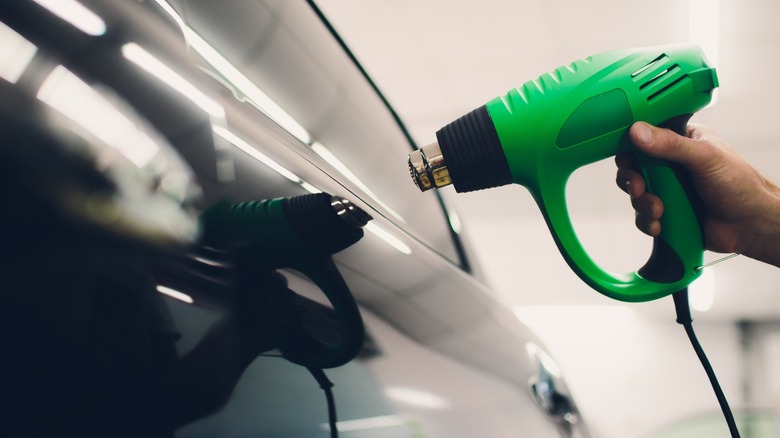What Is The Darkest Legal Tint In California?
Beyond the aesthetics, aftermarket car window tinting enhances the occupants' privacy, improves temperature control, reduces the potential for dangerous glares, and, depending on whether it's a ceramic or carbon window tint, even improves window strength. Factory tint, which comes with most new vechicles, is a permanent feature of the glass and hovers around 15% to 20% visible light transmittance, or how much visible light passes through the window. While that's more than dark enough for some drivers, others prefer a near-blackout effect. Whether adding tint to a clear window or stacking on top of factory tinting, before the film comes out, it's important to understand your state's laws.
Tinted glass adds privacy, but the darker tints are banned in almost every state because they're seen as a safety risk. That's why every state has regulations in place regarding aftermarket tinting. California, known for being fairly strict on traffic safety, has a rather tought allowance. Per the state's Vehicle Code, the lowest allowable aftermarket tint is 70%. While not fully transparent, as it still blocks 30% of visible light, it's quite light when compared to states that don't seem to care about window tint, which allow as much as 100% tint on certain windows.
There are a few caveats to the law, particularly what's required for tinting to be considered legal. Before going to add that darker tint, avoid the ticket and brush up on California's law.
California's tint regulations
California's 70% limit on visible light transmission covers only one aspect of window tinting. That 70% pertains to the windshield, driver- and passenger-side windows, and the rear windshield, so no window is allowed to have a darker tint. When it comes to the front driver and passenger windows, drivers with aftermarket tinted windows must be able to produce a certificate, signed by the company that did the work, confirming the materials used meet California's requirements.
The windshield and rear windows, meanwhile, can only use a light-blocking film if the driver can produce a certificate proving they have a medically diagnosed problem with ultraviolet rays. The use of a colorless film to block the UV rays must be certified by a licensed dermatologist.
Along with the visible light percentage, California law dictates how much of the windshield can be tinted, creating what's known as the shade or sun band at the top. This strip, which must not extend below 29 inches above the driver's seat, cannot be amber or red, and it must not be a surface that reflects into the eyes of oncoming drivers. As with all tinting on a vehicle, if it's torn or has bubbles that can prohibit visual clarity, it must be replaced.
How much can you be fined in California for dark tint?
Regardless of what the California Vehicle Code states, some drivers are going to do as they wish and go for a tint darker than the 70% visible light limit. For those who push the law and get caught, though, a fine is a possible outcome. Per the California Vehicle Code, the first infraction may result in a fine of $100. If a second infraction is incurred within a year of the first, the penalty can increase, but no more than $200. A third infraction within the same year of the previous two increases the penalty to no more than $250.
If you're getting your windows tinted in California, it's best to leave the task to a professional. Granted, professional window tinting costs quite a bit more than DIY — around $250 for a sedan, or $250 to $750 for an SUV, compared to $59.99 for a precut at-home kit. But there's also that previously mentioned stipulation stating the front window tints must be certified by the installation company. While it may be unlikely that law enforcement will ever ask for the signed certificate, sometimes it's best to err on the side of caution.


